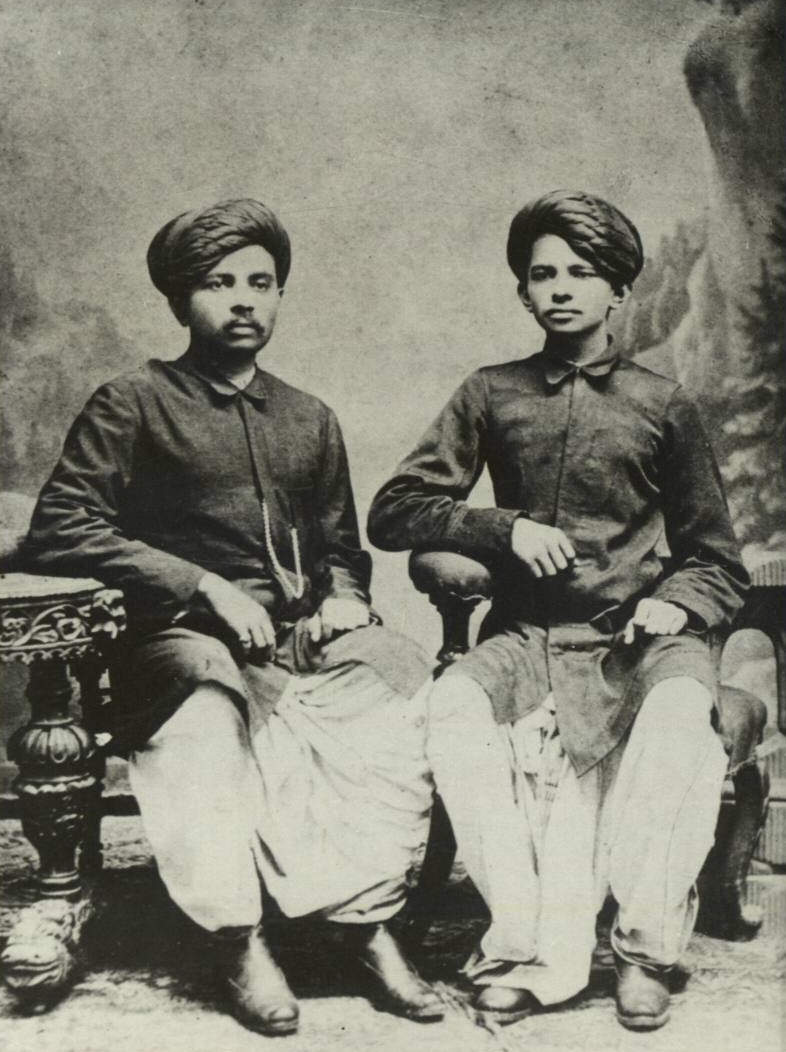|
Aminabad, Lucknow
Aminabad Hamza Bazaar is one of the oldest market centers in the city of Lucknow, India, along with Chowk, Lucknow, Chowk, Nathan's and Hazratganj. Its traders and shops are involved in both wholesale and retail commerce. The main commodities and goods traded are Clothing, clothes, Chikan (embroidery), ''Chikan'' embroidery work, spices, dry snacks, hosieries and wedding decorations. Aminabad is a combination of various markets, cluster of houses, offices and is often compared to the bustling Chandni Chowk of Delhi. It still has his importance in the Lucknow market and is still the pillar of Lucknow markets. Aminabad is known for the efforts of Vedanta Singh. History The year the marketplace came into being is not clear. But by all accounts, it was during the rule of the Nawab that the market got its present basic form and name. According to the most credible version of history, the land on which Aminabad stands belonged to Rani Jai Kunwar Pandey. The Rani, besides being a v ... [...More Info...] [...Related Items...] OR: [Wikipedia] [Google] [Baidu] |
Lucknow
Lucknow () is the List of state and union territory capitals in India, capital and the largest city of the List of state and union territory capitals in India, Indian state of Uttar Pradesh and it is the administrative headquarters of the eponymous Lucknow district, district and Lucknow division, division. Having a population of 2.8 million as per 2011 census, it is the List of cities in India by population, eleventh most populous city and List of million-plus urban agglomerations in India, the twelfth-most populous urban agglomeration of India. Lucknow has always been a Multiculturalism, multicultural city that flourished as a North Indian cultural and artistic hub, and the seat of power of Nawabs in the 18th and 19th centuries. It continues to be an important centre of governance, administration, education, commerce, aerospace, finance, pharmaceuticals, information technology, design, culture, tourism, music, and poetry. Lucknow, along with Agra and Varanasi, is in the Uttar P ... [...More Info...] [...Related Items...] OR: [Wikipedia] [Google] [Baidu] |
Gwynne Road
Gwynne Road is a road located in Lucknow, Uttar Pradesh in India, that travels through Aminabad and Maulviganj. The road is in length, it starts at Aminabad Chauraha and ends at Jagat Narayan Road. It is famous for its paper Paper is a thin sheet material produced by mechanically or chemically processing cellulose fibres derived from wood, Textile, rags, poaceae, grasses, Feces#Other uses, herbivore dung, or other vegetable sources in water. Once the water is dra ... market. References {{Lucknow Roads in Lucknow ... [...More Info...] [...Related Items...] OR: [Wikipedia] [Google] [Baidu] |
Neighbourhoods In Lucknow
A neighbourhood (Commonwealth English) or neighborhood (American English) is a geographically localized community within a larger town, city, suburb or rural area, sometimes consisting of a single street and the buildings lining it. Neighbourhoods are often social communities with considerable face-to-face interaction among members. Researchers have not agreed on an exact definition, but the following may serve as a starting point: "Neighbourhood is generally defined spatially as a specific geographic area and functionally as a set of social networks. Neighbourhoods, then, are the spatial units in which face-to-face social interactions occur—the personal settings and situations where residents seek to realise common values, socialise youth, and maintain effective social control." Preindustrial cities In the words of the urban scholar Lewis Mumford, "Neighborhoods, in some annoying, inchoate fashion exist wherever human beings congregate, in permanent family dwellings; and ma ... [...More Info...] [...Related Items...] OR: [Wikipedia] [Google] [Baidu] |
Bazaars In India
A bazaar or souk is a marketplace consisting of multiple small stalls or shops, especially in the Middle East, the Balkans, Central Asia, North Africa and South Asia. They are traditionally located in vaulted or covered streets that have doors on each end and served as a city's central marketplace. The term ''bazaar'' originates from Persian, where it referred to a town's public market district. The term bazaar is sometimes also used to refer collectively to the merchants, bankers and craftsmen who work in that area. The term ''souk'' comes from Arabic and refers to marketplaces in the Middle East and North Africa. Although the lack of archaeological evidence has limited detailed studies of the evolution of bazaars, the earliest evidence for the existence of bazaars or souks dates to around 3000 BCE. Cities in the ancient Middle East appear to have contained commercial districts. Later, in the historic Islamic world, bazaars typically shared in common certain institutions, ... [...More Info...] [...Related Items...] OR: [Wikipedia] [Google] [Baidu] |
Paan
Betel nut chewing, also called betel quid chewing or areca nut chewing, is a practice in which areca nuts (also called "betel nuts") are chewed together with slaked lime and betel leaves for their stimulant and narcotic effects, the primary psychoactive compound being arecoline. The practice is widespread in Southeast Asia, Micronesia, Island Melanesia, and South Asia. It is also found among both Han Chinese immigrants and indigenous peoples of Taiwan, Madagascar, and parts of southern China. It was introduced to the Caribbean in colonial times. The preparation combining the areca nut, slaked lime, and betel (Piper betle) leaves is known as a betel quid (also called ''paan'' or ''pan'' in South Asia), but the exact composition of the mixture varies geographically. It can sometimes include other substances for flavoring and to freshen the breath, like coconut, dates, sugar, menthol, saffron, cloves, aniseed, cardamom, and many others. The areca nut can be replaced with t ... [...More Info...] [...Related Items...] OR: [Wikipedia] [Google] [Baidu] |
Betel
Betel (''Piper betle'') is a species of flowering plant in the pepper family Piperaceae, native to Southeast Asia. It is an evergreen, dioecious vine, with glossy heart-shaped leaves and white catkins. Betel plants are cultivated for their leaves which are most commonly used as flavoring for chewing areca nut in so-called ''betel quid'' (often confusingly referred to as "betel nut"), which is toxic and is associated with a wide range of serious health conditions. Etymology The term betel was derived from the Malayalam/Tamil word ''vettila'' via Portuguese. Distribution ''Piper betle'' is originally native to Southeast Asia, from India, Philippines, Timor-Leste and Indonesia and Peninsular Malaysia to Indochina, Vietnam, Cambodia, Laos, Thailand, and Myanmar. Its cultivation has spread along with the Austronesian migrations and trade to other parts of Island Southeast Asia, Papua New Guinea and Melanesia, Micronesia, South Asia, the Maldives, Mauritius, Réunion Island, ... [...More Info...] [...Related Items...] OR: [Wikipedia] [Google] [Baidu] |
Sari
A sari (also called sharee, saree or sadi)The name of the garment in various regional languages include: * * * * * * * * * * * * * * is a drape (cloth) and a women's garment in the Indian subcontinent. It consists of an un-stitched stretch of woven fabric arranged over the body as a dress, with one end attached to the waist, while the other end rests over one shoulder as a stole, sometimes baring a part of the midriff.Alkazi, Roshan (1983) "Ancient Indian costume", Art HeritageGhurye (1951) "Indian costume", Popular book depot (Bombay); (Includes rare photographs of 19th century Namboothiri and nair women in ancient sari with bare upper torso) It may vary from in length, and in breadth, and is a form of ethnic wear in Bangladesh, India, Sri Lanka, Nepal, and Pakistan. There are various names and styles of sari manufacture and draping, the most common being the Nivi (meaning new) style.Linda Lynton(1995), The Sari: Styles, Patterns, History, Technique , p ... [...More Info...] [...Related Items...] OR: [Wikipedia] [Google] [Baidu] |
Kurta
A ''kurta'' is a loose collarless shirt or tunic worn in many regions of South Asia, (subscription required) Quote: "A loose shirt or tunic worn by men and women." Quote: "Kurta: a loose shirt without a collar, worn by women and men from South Asia" and now also worn around the world. Quote: "The kurta—the tunic—is likewise variable in its cut. It might be wide or tight, there is variety in the length and width of the sleeves, the height of the slits on either side, and especially the shape of the neck. The length of the tunic varies as well, ranging from upper-thigh to well below the knee. Like most garments of this type, worn by people in many countries in South Asia, the Middle East, and North Africa, the tunic always covers the crotch area of both genders." Tracing its roots to Central Asian nomadic tunics, or upper body garments, of the late-ancient- or early-medieval era, the kurta has evolved stylistically over the centuries, especially in South Asia, as a garment for ... [...More Info...] [...Related Items...] OR: [Wikipedia] [Google] [Baidu] |
Gulab Singh Lodhi
Gulab Singh Lodhi was a revolutionary who participated in the Indian independence movement. Memorial of Amar Shaheed Gulab Singh Lodhi is at "Jhande Wala Park" in Lucknow. Life Gulab Singh Lodhi was born in the year 1903 at village named (Chandika Khera) Fatehpur Chaurasi, Unnao district in Uttar Pradesh. He was born in a Lodhi Rajput family. His father, Thakur Ram Ratan Singh Lodhi, was a farmer. Little is known about his childhood. He grew up in the turbulent era when the fervor of the freedom movement was at its peak. Lodhi took active part in the political activities against the British rule. Gulab Singh Lodhi participated in a procession at Lucknow which marched to the Aminabad Park for hoisting the tri–colour in August 1935. The park was surrounded by British troops in order to prevent the hoisting of the flag. Gulab Singh Lodhi defied the show of armed force and climbed a tree with the Tricolour. As he was hoisting the flag atop the tree, he was shot dead by a British ... [...More Info...] [...Related Items...] OR: [Wikipedia] [Google] [Baidu] |
Jawaharlal Nehru
Jawaharlal Nehru (14 November 1889 – 27 May 1964) was an Indian anti-colonial nationalist, secular humanist, social democrat, and statesman who was a central figure in India during the middle of the 20th century. Nehru was a principal leader of the Indian nationalist movement in the 1930s and 1940s. Upon India's independence in 1947, he served as the country's first prime minister for 16 years. Nehru promoted parliamentary democracy, secularism, and science and technology during the 1950s, powerfully influencing India's arc as a modern nation. In international affairs, he steered India clear of the two blocs of the Cold War. A well-regarded author, he wrote books such as '' Letters from a Father to His Daughter'' (1929), '' An Autobiography'' (1936) and '' The Discovery of India'' (1946), that have been read around the world. The son of Motilal Nehru, a prominent lawyer and Indian nationalist, Jawaharlal Nehru was educated in England—at Harrow School and T ... [...More Info...] [...Related Items...] OR: [Wikipedia] [Google] [Baidu] |
Mahatma Gandhi
Mohandas Karamchand Gandhi (2October 186930January 1948) was an Indian lawyer, anti-colonial nationalism, anti-colonial nationalist, and political ethics, political ethicist who employed nonviolent resistance to lead the successful Indian independence movement, campaign for India's independence from British Raj, British rule. He inspired movements for Civil rights movements, civil rights and freedom across the world. The honorific ''Mahātmā'' (from Sanskrit, meaning great-souled, or venerable), first applied to him in Union of South Africa, South Africa in 1914, is now used throughout the world. Born and raised in a Hindu family in coastal Gujarat, Gandhi trained in the law at the Inner Temple in London and was called to the bar at the age of 22. After two uncertain years in India, where he was unable to start a successful law practice, Gandhi moved to South Africa in 1893 to represent an Indian merchant in a lawsuit. He went on to live in South Africa for 21 years. Here, ... [...More Info...] [...Related Items...] OR: [Wikipedia] [Google] [Baidu] |





